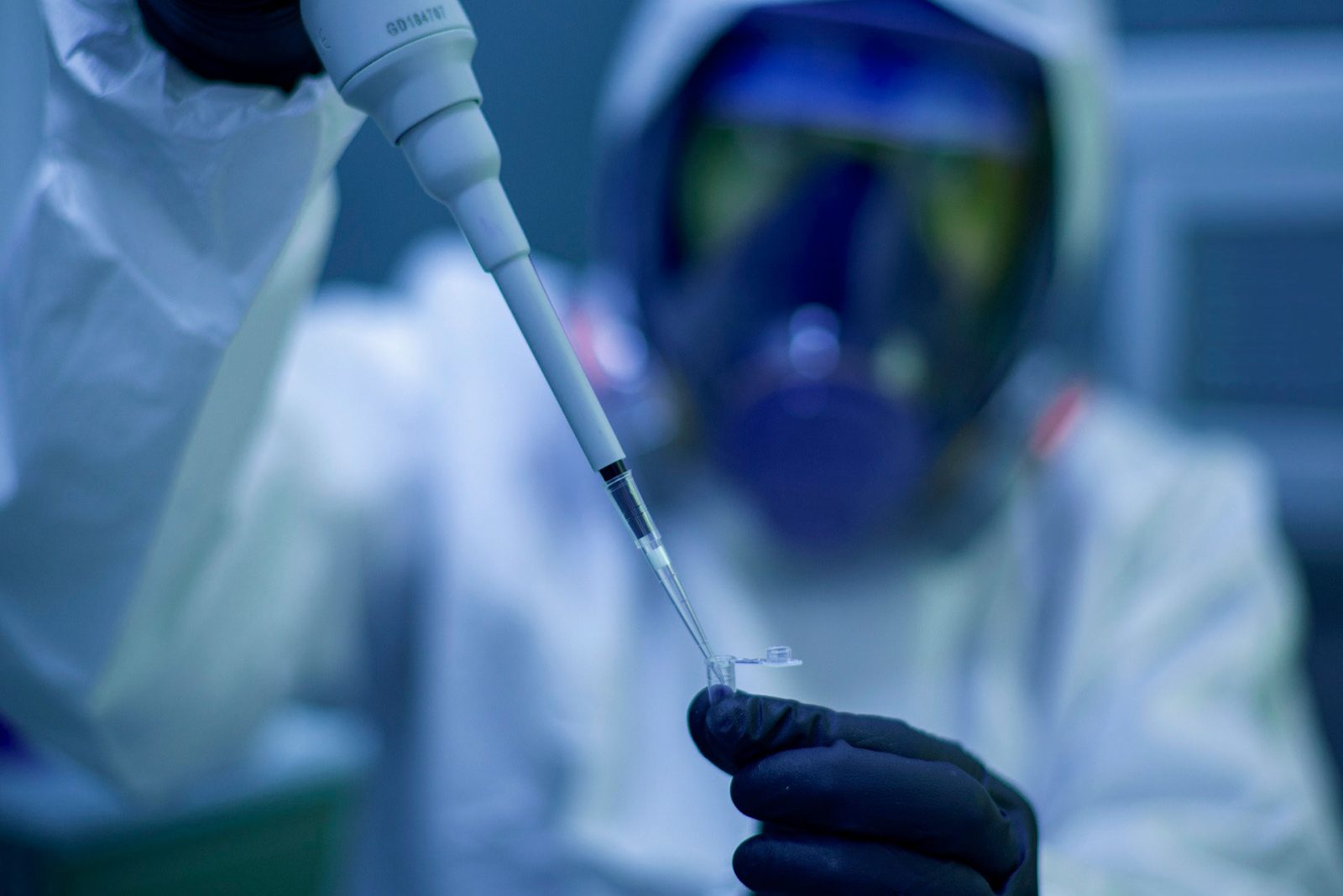Nicknamed “forever chemicals”, PFAS are ubiquitous. Now, scientists are looking to nature for ways to clean up the PFAS mess.
How do you solve a problem like PFAS? More than 9,000 different types of synthetic per- and polyfluoroalkyl substances (PFAS) are used to make everything from firefighting foam to the non-stick coating on cooking pans. Nicknamed “forever chemicals”, PFAS are persistent and ubiquitous. They have been found in rainwater, soil, wildlife and humans. Now, scientists are working on ways to clean up their long-lasting effects.
A recent UK and Europe-wide investigation, led by Le Monde and Watershed Investigations, identified over 2,100 “hotspots” thought to be contaminated with levels of PFAS hazardous to health (more than 100 nanograms per litre). Following links to negative health impacts – perfluorooctanoic acid (PFOA) is classified by the International Agency for Research on Cancer (IARC) as a possible carcinogen and some PFAS are known to disrupt hormone systems – certain compounds have been banned internationally through the Stockholm Convention on Persistent Organic Pollutants, an international environmental treaty that aims to eliminate or restrict the production and use of persistent organic pollutants.
But with so many forever chemicals already in the environment, efforts to clean them up do not come cheap. A recent report from ChemSec, a Sweden-based non-profit that advocates for safer chemicals, found that the global societal costs – including remediation – of PFAS chemicals amount to €16tn ($17tn/£13.8tn) per year.
“I think all of this is fixable. It’s just a matter of cost,” says Ian Cousins, a professor of environmental chemistry at Stockholm University. “There are treatment technologies that work for legacy PFAS. You can, in principle, clean up a very contaminated site – if you have all the money in the world. But where’s the money going to come from? We need technologies that are low cost, low energy.”
Now, scientists are developing new ways to clean up PFAS pollution and prevent further environmental contamination.
In the water cycle
Commercially available water filters, as well as industrial scale filters for water treatment plants, tend to focus on removing heavy metals, pesticides and contaminants such as chlorine.
But, because PFAS include such a diverse group of chemical compounds, making filters that can remove them all is a huge challenge, says Andrew Knight, a chemist at US government-funded Sandia National Laboratories. He is working with a team of chemists and material scientists to design a filtration system able to capture a wide range of PFAS.
The toxicology of these chemicals is not yet fully understood. We just know they’re everywhere and they shouldn’t be – Ian Cousins
Different filters tend to be effective for different PFAS so Knight is investigating which materials and pore sizes give maximum adsorption of multiple PFAS compounds. Generally, more abundant organic matter sticks to filters first, he says, so placing a PFAS filter at a stage in the filtration system where organic matter is at a minimum could help target PFAS.
However, Knight warns there are too many unknowns right now: “The toxicology of these chemicals is not yet fully understood so we don’t really know which ones are the most toxic. We just know they’re everywhere and they shouldn’t be.”
Then there is the question of waste. If PFAS can be successfully filtered out of the water, you are left with waste material containing a high concentration of PFAS.
“Enabling some sort of degradation would be critical,” says Knight who notes that any new filtration economy needs to allow for customers to send contaminated filters away for proper disposal.
Usually, says Knight, any remaining concentrate goes to landfill or energy-intensive incineration. Many PFAS are designed to be thermally stable and heat resistant – Teflon or PTFE can withstand temperatures of up to 260C (500F) – and Knight explains that the burning of longer-chain PFAS releases short-chain PFAS into the air that could be more mobile and move through soil, into groundwater and through water systems – ending up right back in drinking water.
Cousins adds: “There are energy efficient ways to filter it, but at the moment there aren’t any energy efficient ways to destroy PFAS. There’s no magical solution available right now.”
Zapping and deep UV
Beyond filtering out PFAS, some researchers are investigating more cost-effective and practical destruction technologies that break down PFAS without the need for high heat or intense pressure.
Electrochemical and photochemical techniques have been used by scientists at the University of British Columbia to “zap” PFOA that’s been trapped onto a reusable silica-based material. While another team at the University of California are using “deep UV” – extremely low wavelengths (below 220nm) of ultraviolet light – to break PFAS down under ambient conditions without producing secondary waste. Once contaminated water has been infused with hydrogen, high-energy deep UV excites the water and hydrogen, making them more reactive and able to catalyse reactions that break down PFAS.
As the study author Haizhou Liu explains, trace levels of both long- and short-chain PFAS in groundwater are broken down. When the strong carbon-flourine bonds within all PFAS are split using this green chemistry, without heat or additional chemicals, fluoride is the only by-product – one that helps protect our teeth.
“Essentially, we’re converting a toxic chemical into a beneficial element,” says Liu who published a lab-scale study last year that destroyed PFAS in one litre (0.2 gallons) of contaminated water. “We have promising real water data that shows very high destruction.”
Liu is now building a pilot-scale system that will be able to process several gallons of water per minute. Within two years, he hopes to develop a UV reactor that can handle millions of gallons per day. And because UV light is already widely used as a disinfection method, Liu highlights that deep UV can be retrofitted into existing infrastructure at municipal water treatment plants using low-energy LED UV lamps. “To commercialise, the technology needs to be simple,” he adds.
In addition to water treatment, soil remediation is necessary at heavily contaminated sites. One strategy is to pump activated carbon into the soil that binds PFAS in situ to prevent leaks into groundwater – this has been done in Australia, for example, but there are no longterm studies of this yet. Another option is to dig out contaminated soil and clean it, using different washing methods, but the remaining water still has to be purified, either with filters or UV radiation.
Some academics are looking to nature for inspiration – and microbes could offer a biological solution. At Princetown University in 2019, researchers found that Acidimicrobium bacterium A6 removed 60% of PFOS and PFOA in lab vials over 100 days of observation.
Yujie Men, an environmental microbiologist at the University of California, comments that the Princetown study hasn’t been replicated, and that the exact mechanism of degradation isn’t clear so more research is required.
Carbon-flourine bonds in PFAS are “chemically robust” and tough to break, so Men wants to know which enzymes could degrade certain chemical structures. “Microbes haven’t had time to evolve ways to biodegrade PFAS yet. In the lab, we can manipulate microorganisms by enzyme engineering instead of waiting for that natural evolution to occur over millions of years. Right now, we’re at the first step of working out which bacteria and which enzymes could do the job. Eventually, the goal would be to use that to create a biocatalyst.”
While microbes alone won’t degrade all PFAS pollution, Men says that biocatalysts could speed up the breakdown of some shorter-chain PFAS. “Our study figured out aerobic bacteria can do a better job when your structure is less fluorinated – plus microbes can grow easily in ambient temperatures so this could be cost-effective too.” Men is also investigating how microbes could play a role in developing more degradable PFAS alternatives. For applications where PFAS play an essential role like pharmaceuticals, she hopes that her microbial studies could help design more biodegradable fluorinated compounds. “We need PFAS alternatives that are more environmentally friendly, less toxic, but still have similar functionality,” she says.
And, while some remediation technologies look promising, they shouldn’t be an excuse to keep producing PFAS, adds Anna Lennquist, senior toxicologist at ChemSec. Lennguist hopes that the European Chemicals Agency’s proposed plans to restrict the manufacture and use of the entire class of PFAS chemicals could drive innovation to replace PFAS with safer, healthier alternatives, something that she says is as essential as clean-up efforts.
There’s certainly no one-size-fits-all answer, she says. “For every type of PFAS, we’ll need a set of different solutions – there will be no drop-in substitute. [The solution] won’t always have to be another chemical, sometimes it might involve process changes or different materials.
“Of course, we have to do something about these super-contaminated places to be able to drink the water,” she says, “but the overall solution is to stop the production and use [of PFAS] as far as possible.”
Source by: BBC






























Leave a Reply